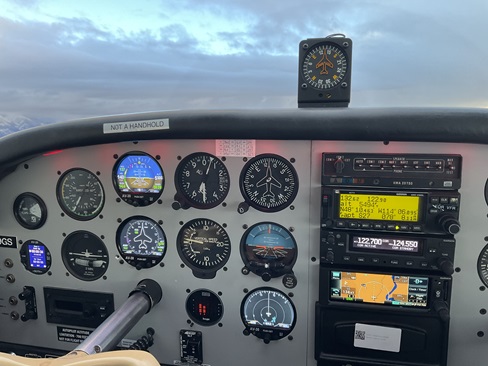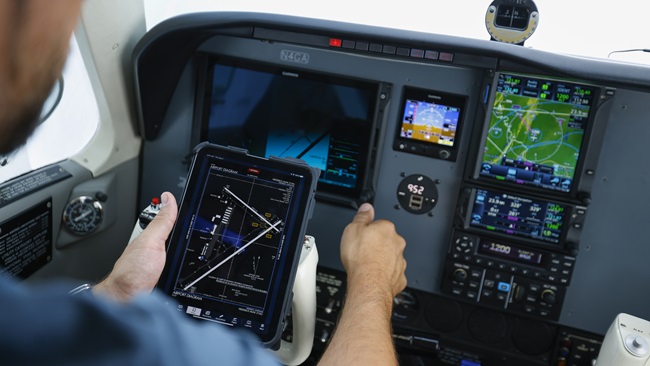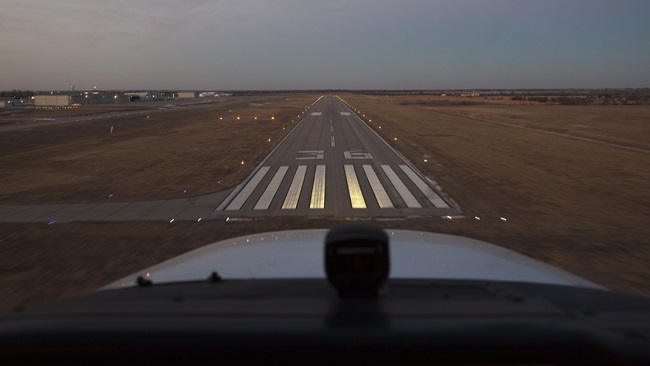Drone flew dangerously close to Blue Angels
FAA investigating; fines possible but infrequently imposed
Drone pilots were as outraged as the rest of us by the near-midair collision between the U.S. Navy Blue Angels and what’s believed to have been a small consumer quadcopter. If not for YouTube, the world might never have known.
This is a story with good guys and bad guys that really begins about a decade before the Blue Angels even thought about forming up over Detroit to honor frontline responders to the coronavirus pandemic, and then nearly smacked a drone in the process.
Certainly, the frontline responders are among the good guys, but they don’t really figure in this story. The Blue Angels pilots would also be in this camp, and thanks to a touch of good luck, they don’t really, either, though it appears that the drone that took the video (which several people managed to download and republish before the original post was hidden from public view) came within a few feet of the formation over Detroit on May 12. (The team’s public affairs officer did not respond to an email seeking comment on the incident, though we presume that the team was not well-pleased by the close encounter they probably didn’t notice as it happened.)
Among those who downloaded the video soon after it was first published on May 13 was Vic Moss, a professional photographer, a remote pilot, and an administrator of a Facebook group of commercial remote pilots with more than 16,000 members. Moss, despite his attempts to make clear when reposting the now-invisible original that the video in question was not his own, was promptly excoriated by many who mistook him for the pilot on the sticks behind the stunt that could have cost one or more human lives, and done lasting damage to a fledgling industry.
“I’m really happy that people are mad at me,” Moss said in a telephone interview. Wait, “happy”? “We’re maturing as an industry, and people are really passionate about safety.”
Moss tracked the pilot down through social media profiles that have since, he said, been deleted. The pilot does not appear to be one of the good guys. Moss was furious with him. The exchange between the two men grew heated, Moss said.
“He and I had a conversation before he went dark,” Moss said. “He finally told me his lawyer told him to quit talking to people.”
AOPA was unable to confirm the authorship of the video in question, so we’ll leave the alleged bad guy’s name out of it until he is identified by authorities.
Despite what you might think, it’s not clear what, if anything, will come of the federal investigation. The FAA did not comment beyond confirming that the incident is, indeed, under investigation.
A disturbingly common problem
Contrary to one published report, there’s no record of a temporary flight restriction being in place during the May 12 Navy flight over Detroit. The near-miss was not illegal on those grounds, though the UAS flight appears to have violated at least three of the recreational drone rules that began as guidelines, and were written into federal law in 2018: The flight likely exceeded the 400-foot altitude limit (which was a guideline prior to 2018, but now it’s a hard limit), and the drone, based on the video alone, appears to have been flown in a “careless and reckless manner.”
Hovering a few feet away from the flight path of six oncoming Navy F/A–18 Hornets does not constitute giving way to manned aircraft, providing federal authorities another possible basis for a hefty fine. (Moss said there is no record that the remote pilot in question holds an FAA remote pilot certificate, or any other FAA certificate.)
Hovering, by the way, makes small, unmanned aircraft particularly difficult to see from a cockpit, which means it is unlikely that any of the Blue Angels pilots saw the drone as they flew past it. Researchers at Embry-Riddle Aeronautical University have established that probability in a series of controlled experiments, finding that manned aircraft pilots spot encroaching drones only about 30 percent of the time when approaching a runway to land, and “a mere three out of 22 motionless drones were spotted,” the university reported in 2019.
Embry-Riddle has been conducting electronic surveillance of various locations in Florida, including the controlled airspace around Florida, for years, and they have never failed to turn up evidence of at least some bad behavior.
Equipped with a DJI AeroScope system that can detect and locate nearby DJI drones, they found dozens of apparent violations of airspace restrictions in 2018, and more recent AeroScope deployments revealed that the song remains the same.
The university announced on May 21 the publication of a follow-up study, co-authored with Oklahoma State University and based on surveillance conducted in 2019, after Congress put some teeth in the FAA rules for recreational operators.
“The vast majority of small unmanned aircraft systems (UAS) detected around Daytona Beach International Airport during a 30-day period in 2019 lacked approval from the U.S. Federal Aviation Administration (FAA), and more than one-third of those drones were flying higher than the law allows,” the university noted in a press release. While recreational UAS pilots can access the FAA Low Altitude Authorization and Notification Capability system to gain approval for flights in controlled airspace, they don’t appear to be bothering. Only 7 percent (19 of 271) of drone flights observed over four weeks of electronic surveillance of the controlled airspace coincided with a flight approved through LAANC.
More than a third of those 271 drone flights (34.3 percent) climbed above 400 feet.
“Among the group flying too high, 32 were higher than 500 feet, six were detected above 1,000 feet, and three exceeded 1,500 feet, posing a real risk to manned aviation operations in the National Airspace System—particularly if most of those drones are not even authorized to be flying in controlled airspace,” said Embry-Riddle assistant professor Ryan J. Wallace, one of the study’s authors.
Honor system not working
Electronic surveillance of the roughly 1.5 million unmanned aircraft registered in the United States is spotty, at best. The Government Accountability Office published findings in 2019 that highlight the challenges the FAA faces enforcing drone regulations. The FAA lacks the resources to actively police the entire national airspace system in real time, and must rely heavily on local law enforcement agencies, or citizen complaints, to trigger investigations. Small consumer drones can take off and land virtually anywhere, so the operators can be almost impossible to locate if they don’t post a video of their transgressions online. (The GAO noted that social media and other online posts are the most common precursors to enforcement action.)
If and when FAA investigators do manage to track down a violator and have a conversation like Moss did with the Detroit operator, the FAA has favored voluntary compliance and persuasion over fines or pilot certificate revocations (in cases where the remote pilot is certificated under Part 107 for commercial operation).
“Of the 158 enforcement investigations opened from October 2015 to October 2018, 98 resulted in administrative action or legal enforcement action, such as a warning notice or a civil penalty,” the GAO report states. “Of the 98 completed actions, 51 involved the assessment of civil penalties, 44 resulted in administrative actions, and 3 resulted in the suspension or revocation of UAS remote pilots’ certificates, according to the data FAA provided. During this time frame, FAA levied civil penalties ranging from $250 to $55,000.”
The logistical challenges of enforcing rules that many of the more than 1 million drone users, particularly the recreational crowd, don’t appear to universally respect is at the heart of the FAA’s argument for remote tracking and identification of drones. The FAA is reviewing more than 50,000 comments received (including from AOPA) on a notice of proposed rulemaking that will lead to some form of mandatory electronic surveillance of UAS. That rule is expected to be finalized by 2021.
Remote ID will make UAS operators more accountable, at least potentially, but the FAA will continue to face challenges including the need to educate local law enforcement agencies about the rules, as well as the FAA’s own inspectors. “Inspectors at nearly all of the district offices we interviewed (10 of 11) reported that FAA training related to small UAS was insufficient,” the GAO found.
While enforcement against transgressors is spotty at best, there have been a few incidents egregious enough to provoke stiff fines.
A 2017 incident (cited by the FAA in its notice of proposed rulemaking to establish remote identification and tracking of drones) involving flights over two National Football League games in California in 2017 led to federal charges against Tracy Mapes, accused of dropping leaflets from his drone over Levi’s Stadium and Oakland-Alameda County Coliseum. That case is still pending in federal court, the proceedings having been recently delayed by the coronavirus pandemic, according to court records.
More recently, the FAA leveled a $20,000 fine against Reuben Burciaga, who lost control of a DJI Phantom 3 in Las Vegas. The drone flew uncontrolled for more than two miles over the city and landed near an active runway at McCarran International Airport.
What happens to the Detroit pilot will depend in large part on what the pilot tells investigators. Contrition and a solemn promise not to do it again may impress the FAA enough to settle for voluntary compliance, though the agency could invoke “careless and reckless” behavior and make an example of this pilot with a fine running into tens of thousands of dollars.
Had this pilot not posted the video online, the world may never have known how close the Navy demonstration team came to disaster.




